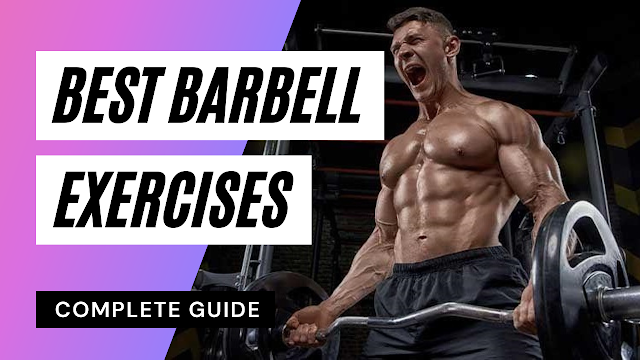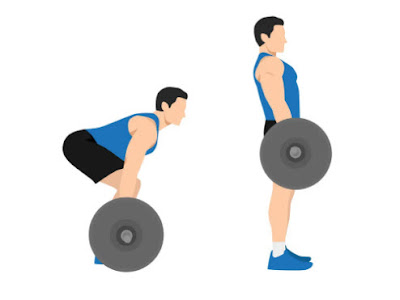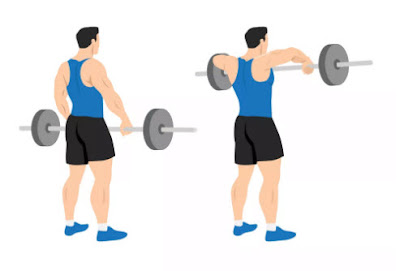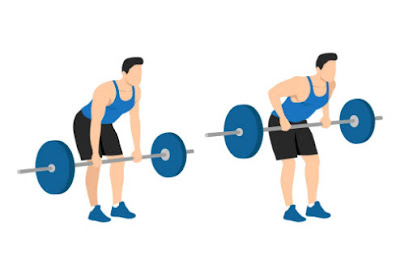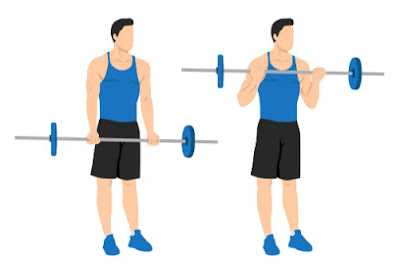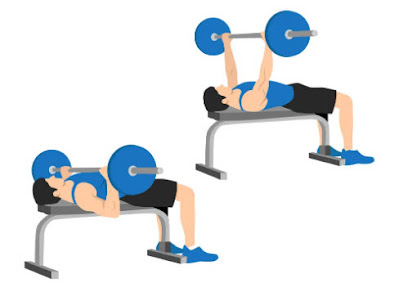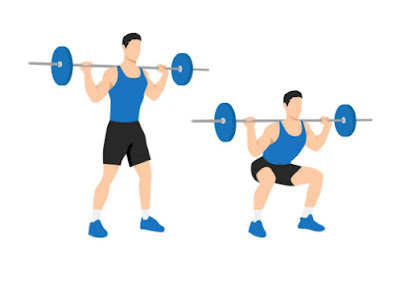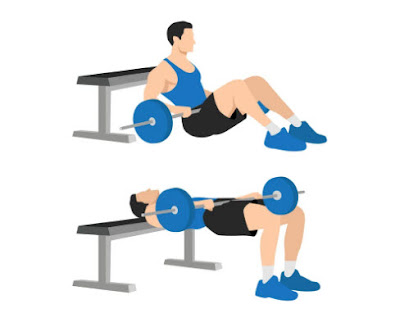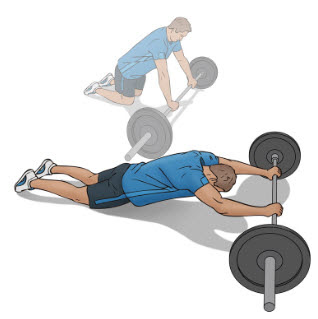Barbell Exercises have long been recognized as a fundamental component of strength training and muscle building. Whether you are a beginner or an experienced lifter, incorporating barbell exercises into your fitness routine can yield significant benefits. From enhancing overall strength and muscle mass to improving functional fitness and athletic performance, barbell exercises offer a versatile and efficient way to achieve your fitness goals.
In this article, we will explore the various aspects of barbell training, including essential exercises, proper technique and form, advanced variations, workout program design, safety precautions, and more. So, let's dive in and discover how to maximize your results with barbell exercises!
You won't believe how much information this article provides!
Well let's start.
Why Barbell Exercises
Understanding the Basics of Barbell Training
Barbell exercises have been a staple in the world of fitness for decades. They involve the use of a long metal bar with weights on either end, allowing you to perform various compound movements. Unlike fancy machines, barbell exercises rely on your body's natural range of motion, making them one of the most effective ways to build strength and muscle.
The History and Evolution of Barbell Exercises
Barbell training has come a long way since its humble beginnings. In the early 20th century, strongmen and weightlifters recognized the benefits of using a barbell for training. Over time, different techniques and exercises were developed, and today, barbell exercises have become a cornerstone of strength training.
Benefits of Incorporating Barbell Exercises in Your Fitness Routine
1.Building Overall Strength and Muscle Mass
If you're looking to get stronger and build muscle, barbell exercises are your best friend. These compound movements engage multiple muscle groups simultaneously, allowing you to lift heavy weights and stimulate maximum muscle growth.
So, if you want to bench press the weight of a small car or squat like a boss, grab that barbell!
2.Improving Functional Fitness and Athletic Performance
Barbell exercises are not just for bodybuilders or powerlifters. They can benefit anyone who wants to improve their overall fitness and athletic performance.
The functional nature of barbell movements helps you develop strength that translates into real-life activities, such as lifting heavy objects or tackling a challenging hike.
3.Enhancing Bone Density and Joint Stability
Barbell exercises are not only about bulding muscles but also about your long-term health. By subjecting your bones to heavy loads, you stimulate the growth of new bone tissue and increase bone density. Additionally, the controlled movements required by barbell exercises can improve joint stability, reducing the risk of injury as you age.
The Best Barbell Exercises List You Need For Every Muscle
1. Barbell Deadlift
Target: Hamstrings, Glutes, Lower back, Traps, and Core
How To Do
- Hold a barbell with the palms facing inward and hands and feet shoulder-width apart.
- Keep the chest up, engage the core and glutes, and rest the barbell against the thighs.
- Hinge from the waist and bend your upper body down.
- Lower the barbell until it almost touches your feet.
- Get up, stand straight, and thrust your hips forward.
- Engage the core and glutes to prevent lower back pain.
- Do 3 sets of 8-12 reps with 20 seconds rest between the sets.
Note: Avoid deadlift if you have lower back pain or injury.
2. Barbell Upright Row
Target: Shoulders and Upper back
How To Do
- Hold the barbell with the palms facing inward, touching the thighs. Keep the hands and feet shoulder-width apart, and the knees soft and chest up. Engage the core and glutes.
- Pull the barbell up towards your chin and keep the elbows out.
- Lower the barbell back to the starting position.
Do 3 sets of 8-12 reps.
3. Barbell Bent-Over Row
Target: Upper back, Glutes, Shoulders, and Upper arms
How To Do
- Hold a barbell with the palms turned outward. Keep the hands shoulder-width apart, bend the knees slightly, roll the shoulders back, and keep your chin up.
- Hinge from the waist and bend your upper body forward. Keep your core and glutes engaged and look down. This is the starting position.
- Keep the elbows close to the body and pull the barbell towards your chest.
- Inhale and lower the barbell back to the starting position.
- Do 3 sets of 8-12 reps.
4. Barbell Bicep Curl
Target: Biceps
How To Do
- Hold a barbell with the palms facing outward, and keep the hands and feet shoulder-width apart. Roll the shoulders back, keep the chest up, and engage the core and glutes.
- Curl your arms up and stop when the elbows are completely flexed.
- Inhale and lower the barbell back to the starting position.
- Do 3 sets of 8-12 reps.
5. Barbell Tricep Extension
Target: Triceps
How To Do
- Lie down on a mat, flex the knees, and keep the feet flat on the floor. Position a barbell above your head before lying down.
- Extend your arms behind your head and grab the barbell. Keep the hands shoulder-width apart.
- Pick the barbell up, extend your hands, and position it right over your chest. This is the starting position.
- Keep the upper arm stable and bend the elbows to lower your forearm. Stop when the barbell is about to touch the floor.
- Exhale and bring your forearm up.
- Do 3 sets of 8-12 reps.
6. Barbell Chest Press
Target: Chest, Shoulders, Upper back, and Biceps
How To Do
- Lie down on your back on a barbell rack bench with the legs on either side of the bench. Keep the feet flat on the floor.
- Grip the barbell and lift it to unhook it from the rack.
- Extend the arms and bring the barbell above your chest. This is the starting position.
- Inhale and lower the barbell. Stop when it is a few inches above the lower ribs of your chest.
- Exhale and push the barbell back up to the starting position.
- Do 3 sets of 8-12 reps.
7. Barbell Shoulder Press
Target: Shoulders, Chest, Biceps, and Upper back
How To Do
- Hold a barbell with palms facing inward. Keep the hands and feet shoulder-width apart and the knees soft. Roll the shoulders back, keep the chest up, and engage the core and glutes.
- Pick it up from the floor to the chest level. Flex your wrists so that the palms face outward. Keep the elbows close to the body and look forward. This is the starting position.
- Exhale and push the barbell above your head.
- Inhale and slowly bring the barbell back to the starting position.
- Do 3 sets of 8-12 reps.
8. Barbell Lunge
Target: Hamstrings, Quads, Glutes, and Core
How To Do
- Position a barbell on the rack at the shoulder level and stand facing away from it.
- Grip the barbell, position it on your shoulders, and lift it.
- Bring your left foot at the same level as the right foot.
- Walk a few steps away from the rack. Engage the core and glutes, keep the feet shoulder-width apart and the chest up, and look forward. This is the starting position.
- Exhale and take a step ahead with your right leg.
- Inhale, bend your knees, and lower your body into a lunge position.
- Exhale, get back up, and place your right foot back.
- Repeat with the left foot to complete one rep.
- Do 3 sets of 12 reps.
9. Barbell Squat
Target: Glutes, Hamstrings, Quads, Lower abs, and Lower back
How To Do
- Position a barbell on the barbell rack at your shoulder level and stand facing away from it.
- Grip the barbell, position it on your shoulders, and lift it.
- Walk a few steps away from the rack. Engage the core and glutes, keep the feet shoulder-width apart and the chest up, and look forward. This is the starting position.
- Push your hips back, bend your knees, and lower your body to get into a sitting or squatting position. The knees should point out and not overshoot the toes.
- Exhale and get back up.
- Do 3 sets of 10 reps.
10. Barbell Hip Thrust
Target: Glutes, Hip adductors, Hamstrings, Quads, and Core
How To Do
- Hold a barbell with the hands shoulder-width apart and palms facing inward.
- Sit on the floor with your back against the barbell bench. Bend the knees, keep the feet flat on the floor, and rest the barbell on your pelvic area.
- Push against the bench to lift your pelvis off the floor. This is the starting position.
- Exhale and push your pelvis up and extend it. The hips, thighs, and upper body should be in the same line.
- Inhale and hinge from the pelvis to bring it down.
- Before it touches the floor, push it up again.
- Do 3 sets of 8-12 reps.
11. Barbell Roll Out
Target: Abs, Glutes, Hamstrings, Shoulders, and Lats
How To Do
- Kneel on a mat and place a barbell in front of your knees.
- Lower your upper body to grip the barbell. Keep the hands shoulder-width apart and the palms facing inward. Engage the core and glutes. This is the starting position.
- Push the barbell with your hands and roll it forward.
- Move your upper body as you roll and keep the spine straight.
- Come back to the starting position.
- Do 3 sets of 8-12 reps.
Essential Barbell Exercises for Overall Strength and Muscle Building
1.Squat Variations:
Back Squat, Front Squat, and Overhead Squat
Squats are the king of all exercises, and barbell squats reign supreme. Whether you choose to do back squats, front squats, or overhead squats, these movements work your quadriceps, hamstrings, glutes, and core. They're like the full-body workout of leg exercises.
2.Deadlift Variations:
Conventional Deadlift, Sumo Deadlift, and Romanian Deadlift
Deadlifts are the epitome of raw strength. With variations like the conventional deadlift, sumo deadlift, and Romanian deadlift, you'll be working your hamstrings, glutes, lower back, and grip strength. Plus, you'll feel like a badass as you lift that barbell up from the ground with impeccable form.
3.Bench Press Variations:
Flat Bench Press, Incline Bench Press, and Close-Grip Bench Press
The bench press is the ultimate upper body exercise. With variations like the flat bench press, incline bench press, and close-grip bench press, you'll target your chest, shoulders, triceps, and even engage your core for stability. Just be prepared for everyone at the gym to ask, "How much do you bench?"
Proper Technique and Form for Barbell Exercises
1.Understanding the Grip, Stance, and Body Alignment
When it comes to barbell exercises, technique and form are key. Pay attention to your grip, stance, and body alignment to ensure you're maximizing the benefits and minimizing the risk of injury. Remember, it's not about how much weight you can lift; it's about performing the movements correctly.
2.Breathing Techniques for Optimal Performance
Breathing—it's not just for staying alive! Proper breathing techniques can significantly enhance your performance during barbell exercises. Learn to brace your core and coordinate your breathing with each rep to stabilize your body and generate more power.
3.Common Mistakes and How to Avoid Them
We all make mistakes, but some can lead to unnecessary injuries or subpar results. Avoid common pitfalls like using improper form, lifting too much weight too soon, or neglecting warm-up sets. Take the time to learn from experienced lifters or consider hiring a qualified coach to guide you along the way.
Now that you're armed with the knowledge of barbell exercises, go forth and conquer the gym! Remember, Rome wasn't built in a day, and neither will your muscles.
So, embrace the journey, lift with passion, and don't forget to flex in the mirror from time to time. You got this!
Advanced Barbell Exercises for Experienced Lifters
1.Olympic Lifts: Clean and Jerk
Ready to take your barbell game to the next level? Olympic lifts like the Clean and Jerk are your ticket to strength and power heaven. Just make sure you have a solid foundation of lifting experience before attempting these bad boys.
The Clean and Jerk combines explosive movements and technical precision, giving you a full-body workout that will leave you feeling like a champion.
2.Barbell Complexes and Supersets
Want to challenge your muscles and elevate your heart rate all in one go? Barbell complexes and supersets are your secret weapon.
These advanced exercises involve performing a series of movements back-to-back without putting the barbell down. It's like a metcon on steroids! Just be prepared for some serious sweating, heavy breathing, and a hefty dose of muscle burn. But hey, no pain, no gain, right?
3.Specialized Barbell Exercises for Targeted Muscle Groups
If you're looking to sculpt specific areas of your body, specialized barbell exercises are your best friends. These exercises, such as the Bulgarian split squat or the barbell hip thrust, target specific muscle groups and take your gains to the next level.
Whether you want to build a gravity-defying booty or sculpt chiseled arms, these specialized barbell exercises will get you there faster than you can say "gains for days."
Designing an Effective Barbell Workout Program
1.Setting Goals and Determining Training Frequency
Before diving into your barbell workouts, it's crucial to set clear goals and determine how often you'll hit the gym. Whether you want to build strength, increase muscle mass, or improve overall fitness, knowing what you want to achieve will guide your training frequency and keep you on track.
2.Selecting the Right Exercises and Repetition Ranges
Should you go heavy or light? High reps or low reps? The answers lie in your goals and the specific muscles you want to target. Choosing the right exercises and repetition ranges is key to achieving your desired results.
So whether you're aiming for size, strength, or a combination of both, make sure to select exercises and rep ranges that align with your goals.
3.Progression and Periodization Strategies
To ensure continuous progress and avoid plateauing, integrating progression and periodization into your barbell training is crucial. Gradually increasing the intensity, volume, or complexity of your workouts will keep your muscles guessing and prevent boredom. Whether you choose to increase weight, vary sets and reps, or incorporate new exercises, progression and periodization will keep you on the fast track to success.
Safety Tips and Precautions for Barbell Exercises
1.Warming Up and Cooling Down Properly
Just like the love between peanut butter and jelly, warming up and cooling down go hand in hand with barbell exercises. Before diving into heavy lifts, it's essential to prepare your body with dynamic stretches and activate the muscles you'll be working.
And when you're done, cool down with some static stretches to aid recovery and prevent muscle soreness. Your body will thank you.
2.Using Spotters or Safety Pins for Heavy Lifts
When the weights get heavy, safety becomes a top priority. To prevent accidents and ensure you have a backup plan, always use spotters or safety pins while performing heavy barbell exercises. They'll have your back (literally) and give you the peace of mind to push your limits without fear of getting squished. Safety first, gains second.
3.Avoiding Overtraining and Listening to Your Body
Overtraining is like a sneaky ninja waiting to attack your gains. Don't let it happen! Listen to your body and give it the rest it deserves. Proper recovery, adequate sleep, and fueling your body with nutritious food are essential components of a successful barbell training program.
Remember, Rome wasn't built in a day, and neither were biceps that make heads turn.
In conclusion
Congratulations, you've made it through the barbell exercise journey! By incorporating advanced exercises, designing an effective program, prioritizing safety, and listening to your body, you're well on your way to maximizing your results. Whether you're in it for strength gains, muscle growth, or just to impress yourself in the mirror, barbell exercises provide a versatile and effective tool to help you reach your fitness goals. So grab that barbell, embrace the burn, and let your gains do the talking.
Frequently Asked Question (FAQ)
1. Are barbell exercises suitable for beginners?
Yes, barbell exercises can be suitable for beginners. However, it is important to start with lighter weights and focus on mastering proper technique and form before progressing to heavier loads. It is recommended to seek guidance from a qualified fitness professional or trainer to ensure safe and effective execution of barbell exercises.
2. Do I need a spotter when performing barbell exercises?
Having a spotter can be beneficial, especially when performing heavy lifts such as bench press or squat. A spotter can provide assistance and ensure your safety in case you are unable to complete a rep. If a spotter is not available, using safety pins or setting up in a power rack with adjustable safety bars can also serve as a safety precaution.
3. Can barbell exercises help with weight loss?
Barbell exercises are primarily focused on building strength and muscle mass. While they may not directly contribute to weight loss, they can play a crucial role in increasing your overall metabolic rate and improving body composition. When combined with a proper nutrition plan and cardiovascular exercise, barbell exercises can aid in weight management and achieving a leaner physique.
4. How often should I include barbell exercises in my workout routine?
The frequency of incorporating barbell exercises into your workout routine will depend on various factors, including your fitness goals, training level, and recovery abilities. Typically, two to three sessions per week that target different muscle groups can be effective. However, it is essential to listen to your body and ensure adequate rest and recovery between sessions to prevent overtraining and maximize results.
These are Best Barbell Exercises List You Need
What do you think of this guide?
Let me know by leaving a comment below, and don't forget to share this guide if you found it helpful.
